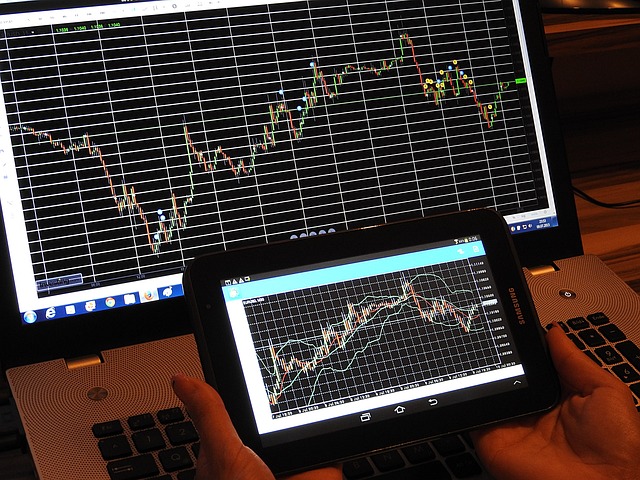Do Trading Bots Work? A Comprehensive Analysis for 2024
Author: Jameson Richman Expert
Published On: 2024-10-18
Prepared by Jameson Richman and our team of experts with over a decade of experience in cryptocurrency and digital asset analysis. Learn more about us.
As we welcome the year 2024, the world of trading continues to evolve, and with it, the technology that underpins it. Trading bots have emerged as powerful tools designed to automate trading processes, allowing traders to take advantage of market movements without constant human intervention. But the question remains: do trading bots actually work? In this article, we'll delve into the intricacies of trading bots, evaluating their effectiveness, functionalities, and the potential risks associated with their use.

Understanding Trading Bots
Before we assess their effectiveness, it's crucial to understand what trading bots are and how they operate. Essentially, a trading bot is a software program that uses algorithms to analyze market data and execute trades automatically based on predefined criteria. These bots can work across various financial markets, including stock, forex, and cryptocurrency.
How Trading Bots Function
Trading bots operate by utilizing specific algorithms and data analysis techniques to make trading decisions. Some of the key functionalities include:
- Market Analysis: Trading bots continuously analyze market conditions, price movements, and trading volumes to identify potential opportunities.
- Trade Execution: Once a trading opportunity is identified, the bot executes trades at speeds far beyond human capabilities.
- Risk Management: Many bots come equipped with features that allow traders to set stop-loss and take-profit levels, managing their risk exposure.
- Strategy Implementation: Bots can be programmed to follow specific trading strategies, whether based on technical indicators, market news, or other criteria.
Types of Trading Bots
In the landscape of automated trading, several types of trading bots can be distinguished:
- Arbitrage Bots: These bots exploit price discrepancies between assets in different markets, allowing traders to profit from minor price differences.
- Market-Making Bots: They provide liquidity to the market by placing simultaneous buy and sell orders, profiting from the bid-ask spread.
- Trend-Following Bots: These bots analyze ongoing market trends and execute trades that align with those trends, typically using technical indicators.
- Breakout Bots: They look for significant price movements above or below defined support and resistance levels, entering trades when these thresholds are crossed.
Pros and Cons of Trading Bots
Advantages of Using Trading Bots
The popularity of trading bots can be attributed to several distinct advantages:
- 24/7 Trading: Unlike humans, trading bots can operate around the clock, allowing traders to capitalize on market opportunities even when they are not actively monitoring the markets.
- Emotionless Trading: Trading bots make decisions based solely on data, eliminating psychological factors that may lead to erratic trading behavior.
- Speed and Efficiency: Bots can execute trades in milliseconds, making them adept at high-frequency trading strategies.
- Backtesting Capabilities: Traders can test their strategies against historical data to evaluate performance before deploying real capital.
Disadvantages of Using Trading Bots
However, trading bots are not without their drawbacks:
- Technical Issues: Bots can suffer from glitches and operational errors, which may lead to ill-timed trades or unforeseen losses.
- Market Limitations: Bots primarily rely on historical data and predefined parameters, which may not account for unexpected market movements or news events.
- Costs: Many trading bots require subscription fees or commissions, which can erode profits over time.
- Dependency: Over-reliance on bots may lead to a lack of understanding of market fundamentals, making traders vulnerable during critical market changes.
Evaluating the Effectiveness of Trading Bots
To determine if trading bots work, we should consider several factors including data accuracy, trading strategies, and market conditions.
Data Accuracy
The effectiveness of a trading bot is heavily reliant on the quality of the data it analyzes. Flawed or outdated data can lead to erroneous trading decisions. Therefore, it is essential for traders to ensure that their bots are integrated with reliable data sources.
Trading Strategies
The success of trading bots is also contingent upon the strategies they employ. A bot programmed with a sound, well-researched strategy that includes risk management measures is more likely to yield positive results. In contrast, a bot relying on a poorly defined or overly aggressive strategy may suffer significant losses.
Market Conditions
Market volatility plays a crucial role in the performance of trading bots. During stable market conditions, bots may perform consistently well. However, in times of extreme volatility or unexpected events, their performance can falter. Traders must remain vigilant and be willing to intervene when necessary.

Real-World Performance: Success Stories and Pitfalls
Success Stories
Many traders have reported success using trading bots, particularly in markets such as cryptocurrency, where rapid price fluctuations are commonplace. For instance, certain arbitrage bots have been able to capitalize on price disparities between platforms, yielding substantial profits within short time frames. Moreover, trend-following bots have successfully navigated bull markets, providing traders with a significant edge.
Pitfalls
Conversely, there are numerous examples of trading bots that have resulted in considerable losses. Those that failed to adapt to changing market conditions or mismanaged risk often left traders with significant capital deficits. Additionally, some bots have been exploited by market makers or institutions, leaving retail traders at a disadvantage.
Tips for Using Trading Bots Effectively
If you decide to venture into the world of trading bots, it is essential to approach them with caution. Here are several tips to maximize their effectiveness:
- Do Your Research: Investigate various trading bots thoroughly before committing. Look for reviews, success rates, and the credibility of the developers.
- Start Small: Begin with a modest investment to test the waters. Scale up only once you are confident in the bot's performance.
- Stay Informed: Keep track of market conditions and news that may impact your trading strategy. Intervene when necessary.
- Diversify: Don't put all your eggs in one basket. Consider using multiple bots with different strategies to mitigate risks.
Final Thoughts
As we move through 2024, the question of whether trading bots work remains complex and multifaceted. While they offer certain advantages, such as speed and emotionless trading, their effectiveness is far from guaranteed. Success depends on a variety of factors including data quality, strategy, market conditions, and user intervention. In conclusion, trading bots can be valuable tools in a trader's arsenal, but they should not be viewed as a panacea for all trading challenges.
For those considering the use of trading bots, it is imperative to approach their employment with a sound understanding of their functionalities, market dynamics, and personal trading philosophy. With education, vigilance, and strategic planning, traders can harness the potential power of trading bots effectively while recognizing their limitations.